Lancoir the Sawmill Museum
The sawmill Le Lancoir at Ban-sur-Meurthe-Clefcy near Fraize.
The sawmill is classified as a historical object of interest.

The sawmill Lancoir is classified as a historical object of interest. You will find an explication of the historical monument on Wikipedia. In France a „monument historique“ is a remarkable building with reference to the French history or to the art. It will be registered in a special list of historical objects.
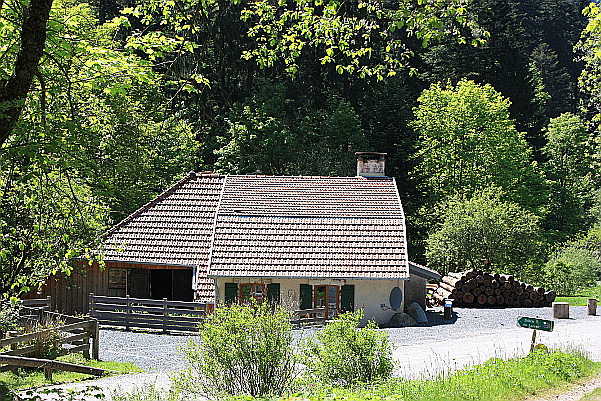
The sawmill museum Le Lancoir in the valley of Le Défilé de Straiture. It is the unique final witness of a past rural industry.
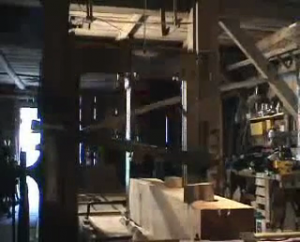
Inside the mill you will be cordially received by sophisticated and kind instructors.
They are very familiar with the operation of the mill. Moreover, they are waiting for all of your questions and there’s a French Website too.
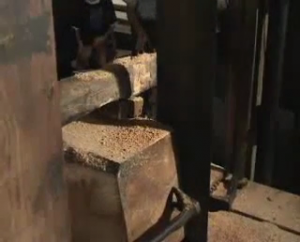
They like to give a detailed reply and to explain everything, which could draw your interest.
On the picture you see how the water driven saw is cutting a board from the plank.
Learn how the sawmill got its name.
The counterpart of the little, narrow valley of the La Petite Meurthe.
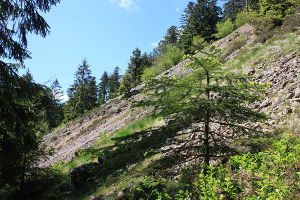
You can see the intense downward slope. It is exactly this intense slope, which has given the ability, to throw down the cut trees to the sawmill.
In French ‚throwing‘ means ‚lancer‘, therefore comes the name ‚Le Lançoir‘.
The cursive following text is an attempt to describe the content of the explanation board in English.
From the sawmill Lancoir ….
(Source: Communauté de Communes de la Haute Meurthe)
The valley La Vallée de Straiture
is doubtless one of the most beautiful in the Vosges. Preserved true to original, it has known in delightful manner to keep its savage beauty and his originality.

The ripple of the running water, the chill breath of the Glacière (remark: the ice between the rocks could be conserved here till summer), the good quality of the air and the silence are the delight of those, who are searching for a harbour of deep quietude.
The sawmill Le Lancoir
has kept a simple and rural character; it is a survival from the first industrialization of the High Vosges. The humble, but very pretty building in this unique valley, has been preserved till nowadays: the touching evidence of a difficult work of the human being.
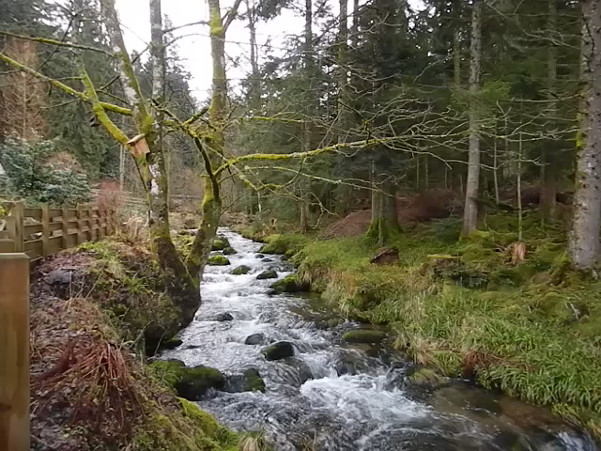
Make a detour, visit the sawmill Lancoir! Some kilometres away, you’ll find the sawmill Le Lancoir, which is open to the public. Visiting the former hydraulically sawmill, which is classified as a historical place of interest, you will discover the difficult life of the sawyers in the 19th century and the extraordinary ingeniousness of the people in the mountains.
You’ll get to know a thousand tricks for operating a sawmill, an engine with a very efficient and amazing technology, in face off a visible rurality.
What is it, a sawyer ?
A sawyer is a worker, who is responsable for the operation of the sawmill. He takes care for all phases of the production, from the receipt till to the sawing of the lumbers. The sawyer lives in the sawmill with his whole family in a quasi autarchy. He has a own kitchen garden and some grazing cattle.
What is it, a sawmill ?
A turbine, on the rear side of the mill, is driven through the passage of the La Petite Meurthe. A brook drives a mechanism which is connected to a saw inside of the building. The saw is connected to a frame and the movement of the seesaw is cutting the wood to boards.
The sawmill Lancoir.
Ruins and other evidence indicate numerous sawmills in the valleys of the Voges. They certify the importance of richness of wood in this massif.
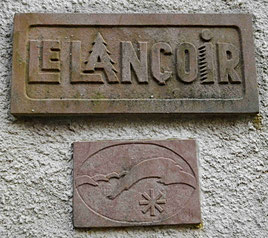
During the centuries the mechanics have developed sophisticated engineering. In the 19th century in Straiture valley the water wheel was replaced by a turbine which was designed by Etienne de Canson-Montgolfier. Today the sawmill Lancoir is the last one in France, which can be presented operational with this kind of turbine. The demonstration of the turbine will be a key element of your visit.
A sawmill in the middle of life in the valley Le Défilé de Straiture. The people weren’t disappointed, as they decided to built a sawmill in the valley Défilé de Straiture. Indeed, one sawyer after the other has known to draw out his advantage of the richness of the valley: of wood and water power from the brook La-Petite-Meurthe, which was canalised along of Le Lancoir.
Today the building is dated into the first half of the 19th century. In addition, relicts from another sawmill from the 17th century has been found here.
The sawmill was on sale in the year 1953,
because water and wood were not still evaluated as profitable. A lot of country people and others from the same occupation were on the move with the idea to buy the building for having a convenient secondary residence in the middle of the forest.
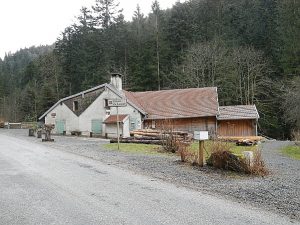
Amongst them was René Durand, the last sawyer of the Straiture, who was enquiring which one will make the commitment there, where his ancestors and he himself suffered so much. When it was felt, that he tried to get his „own household“, expired the ambition of all in face of the wish of this man, which was known and appreciated by everyone.
No one wanted to chase him away from that place, where he was born and where he had always lived. The family Durand operated the sawmill till 1963, the year in which René finished his professional activity.
So the mill was discontinued,
because of losing the usefulness. In the years of the 1990s a renovation program with the partnership of the Naturel Régional des Ballons des Vosges was established. It allowed to restore the turbine with the technique, which was used around 1850. The rest of the mechanism was moved again in an operational state by Mr. Durand; he was assisted by volunteers.
Hear about the problem of the sawmill.
The brook La Petite Meurthe as picturesque as it is, had a problem.
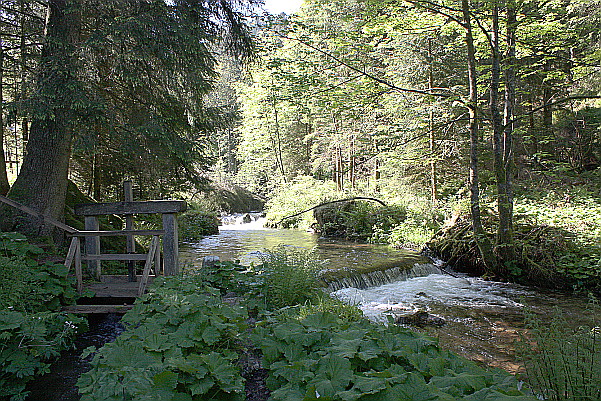
It is to say, that the water volume differed very much. Therefore, a little storage reservoir was built. In the image on the left, a little wooden gate valve is recognizable; this gate offered the possibility to fill the storage in arid times.
First step to resolve the problem.
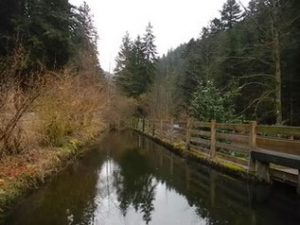
The continuation of the left canal from the picture above, leads to this storage reservoir. You can suppose the overflow is in the right front in the picture. The quantity of water is not to much, but it helps for a little while to keep the water wheel going.
But as usual in former times here in the Vosges, the human have to be very undemanding.
Second step to resolve the problem.
The turbine designed by Etienne de Canson-Montgolfier in action.
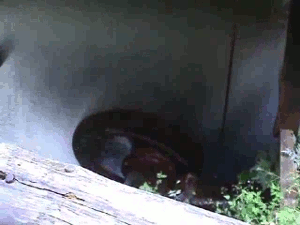
It was especially made for the sawmills in the Vosges, because it was more reliable, than the big wheels.
Initially there were about 60 waterwheels. The last model you see here.
This turbine was considerable more effective, than a normal water wheel.
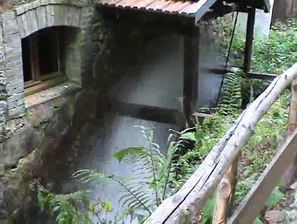
Less water quantity was sufficient and also because the water could impinge the turbine from below.
That is called a undershot water wheel.
This special design has represented a competitive gain.
The sawmill loop walk. ‚Le sentier du Sagard‘.
The loop walk likes to familiarize the interested ones, with the flora in the direct neighbourhood of the sawmill.
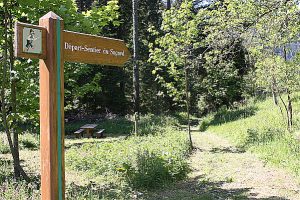
Several presentation boards you’ll detect along the track, which firstly easy passes along, then crosses the brook La Petite Meurthe, afterwards mounts abrupt; therefore sturdy shoes must be recommended. Several lengths of path can be chosen; amongst others you can hike till to the place of La Glacière. At La Glacière, often ice could be conserved till midst of summer. It was appreciated by several professions, for example from the butchers.
The highest trees of Europe.
Following the course you’ll encounter some giants of the flora, the highest trees of Europe.
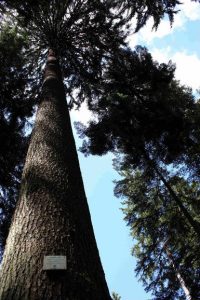
The giants are common spruces from the valley Straiture, nearby the sawmill. The highest of them have nearby 55 meters and a circumference of more than 3 meters. Till to the first green arm we have often more than 20 meters. Each one of the trees has its own number.
An estimation of the age of this trees may be about 200 years. All trees are grown naturally, that means without any human aid. Moreover, spruce appeared in the Vosges about 3000 years ago, as the latest of the trees here. Linked with image-in-ing.
The requested wood from this valley was sometimes driven till to the Netherlands.
The lynx.
If you’re lucky enough and if you have, in particular, the appropriate knowledge, you can see trees with scratch marks from the lynx.
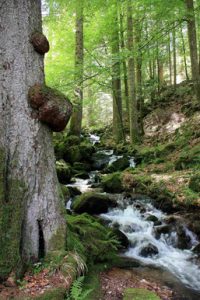
From time to time, you can read here in the local papers a report from the rangers. The seldom and shy animal needs a lot of square miles as habitat.
Definitely, the lynx is present here, even if you will never see him.
The geographical situation.